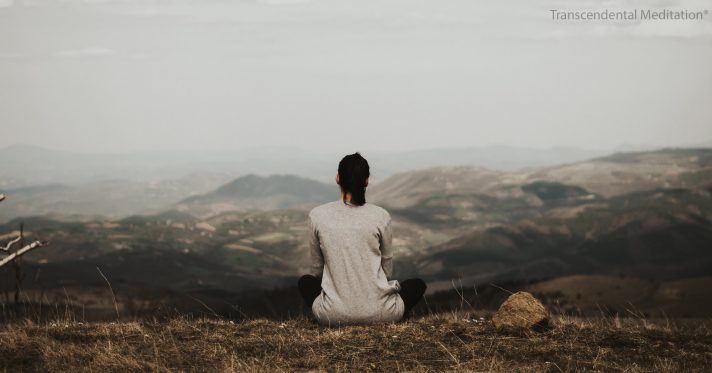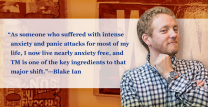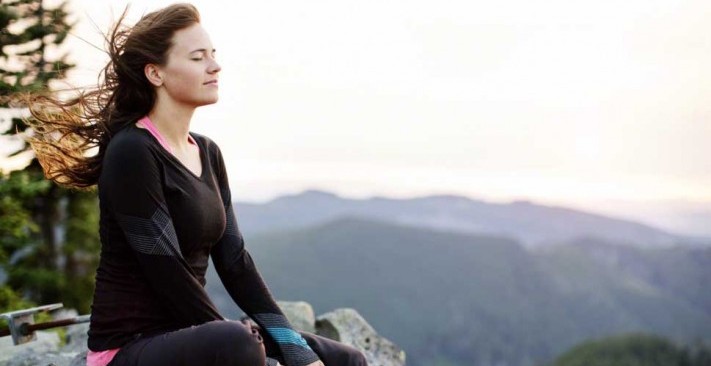My word for 2021 is “pause.”
I’m not usually one to choose a word for the year, but this year, I felt called to do it. With it being such a big year for our company and for me personally, I thought choosing a word to focus on would help me in times when I will inevitably feel overwhelmed and like I’m in over my head.
The word “pause” came to me during my three weeks off. Taking the time to disconnect from my work gave me a much-needed pause, and I realized that pausing was something I needed to do a lot more of: Pausing to enjoy lunch. Pausing to look out the window on a beautiful day. Pausing to reflect. Pausing to think before I speak. Pausing to get clear on what is most important before moving forward. Pausing to think about how I want to show up in every interaction. Pausing to think about how I want to lead our team through this transformation. Pausing, I believe, is key to leading. You can’t lead on autopilot.
The thing is, though, that pausing is a heck of a lot easier to do when you have three weeks off. I knew that when I came back to work, it would be a struggle to not only find the time to pause but to give myself permission to do it. Going from meeting to meeting—even with buffer time—leaves little time for stillness. Knowing you have only a short amount of time with those you lead before your next meeting can cause you to speak more than you listen and make decisions without much thought. On a busy workday when you’ve got priorities pulling you every whichaway, it can feel counterintuitive to stop. I knew that if I really wanted “pause” to be the word I embodied this year, I needed a way to hold myself accountable to it. That’s why I’ve chosen meditation as my personal goal for 2021.
That’s right: This year, my personal goal is to meditate every single day.
Wooooooof.
Even just typing that scares me! It scares me more than any other personal challenge I’ve taken on in the past, including last year’s challenge, which was to cut out alcohol for 365 days. With my alcohol challenge, I just had to cut something out. With this goal, I have to add something in. I have to create space for meditation. I have to challenge the way I work and operate during the day. I have to reframe limiting beliefs that tell me I have to work hard. And it gets even more difficult: The type of meditation style that I’ve chosen is called Transcendental Meditation, which requires two meditations a day for twenty-three minutes each. That’s forty-six minutes a day.
Forty-six minutes?! Do you think I have forty-six extra minutes laying around? Does anyone?!
Transcendental Meditation (TM for short) is a style used by many successful people you’ll likely recognize, including Oprah and Jerry Seinfeld. I learned about it from a member of one of my coaching groups who always comes to our meetings so present, so calm, and so intentional. When she told our group that she practices TM, I was intrigued. What particularly caught my attention was when she described how seemingly simple and effortless TM is: The goal isn’t to concentrate, empty the mind, or control your thoughts. This spoke to me because any time I’ve tried meditation in the past, I’ve had trouble sticking with it because I could never seem to silence my thoughts. I thought that meant that meditation wasn’t for me, but it sounded like TM might teach me otherwise.
Practitioners of TM recommend that you find an instructor to guide you as you are starting out. I signed up with the TM center in Houston in December, but my training was pushed back a bit because of COVID. (I’ll admit, I was happy about that at first: an excuse not to pause… yet!) I just completed my training (which was wonderful) and am thirteen days into meditating daily. Let me tell you, though, it’s hard. I’m already failing.
What has been so surprising to me is that the actual meditation itself isn’t hard. It’s amazing. I get why people do it. In TM, your instructor gives you a mantra that you keep to yourself and hold sacred forever. You repeat it to yourself internally over and over during your meditation. If you have other thoughts, that’s okay. You are told to “effortlessly favor the mantra.” If you lose the mantra for a bit, it’s okay; just come back to it when you can. The first rule of TM is that there really are no rules. The meditation should feel simple and effortless and should work for you. If it feels hard or complicated, you aren’t doing it right.
When I really embrace this philosophy, I get to a place of complete calm in my meditations. It is the most mind-blowing feeling. I don’t know how to describe it… It’s this feeling of happiness and warmth that just radiates inside. And after my meditation, when I come out of it, I feel clearer. I feel more patient. I feel permission to go slower and to give myself the pause I know I need but typically have trouble allowing myself to do. I usually do my best work, my best thinking, and my best leading after a meditation. I feel more confident to lead our team through our transformation after I meditate.
But even though the benefits are obvious, and even though the practice itself is easy, making the time to do it isn’t easy. I still find myself programmed to go-go-go during the day. After missing a few meditations, I’m learning to set boundaries that I stick to. I’m learning to block pausing time in my calendar that I protect; otherwise, I know that I won’t be able to meet my meditation goal. And the more I learn that, the more I’m learning to pause in little ways throughout the day. To take time to enjoy lunch. To listen more than I speak. To zero in on the largest priorities and keep my focus there.
Pausing, I think, could help us all.
Just this weekend, I was chatting with a group of friends about the challenges of working from home. It can feel like you are always on and that the divide between work and home no longer exists. We’ve lost the commute time, which might have been the time we did our best thinking or when we unplugged and disconnected after work. We talked about how now it might at times feel that you are suffocating from your work. That there is so much work, and no matter where you look or where you go, it follows you because your office is your home. It can be too easy to work through lunch or even dinner. One friend shared that during the day, she finds these little pockets of time to go in a different room, close her eyes, and pause. When she feels like she is in over her head, she intentionally makes time to stop. Before big meetings, she goes into that room to gather her thoughts. And especially at the end of the workday, she takes that time for stillness so that she can disconnect from her day. Pausing has become her new commute. It’s these little moments that add up to make her a better leader, both at work and at home.
Call it meditation, call it taking a break, call it pausing, call it whatever you want: The best leaders I know incorporate stillness into their routines. May we all give ourselves permission to move a little slower and allow ourselves to stop when it seems like stopping is the last thing we should do. The more we pause, the better we lead. Personally speaking, this is my year to lead, and I know I can’t do one without the other.
Hugs through the screen, and here’s to meditating more this week than last,
Kristen
This post was originally shared on KristenHadeed.com. You can find the original post here.




